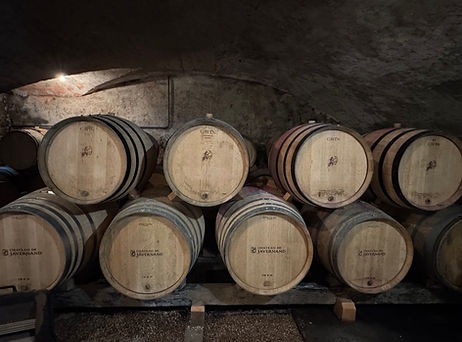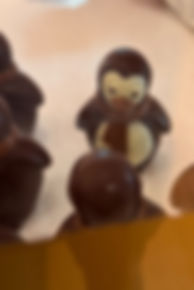

River Tours
Fell Walking in England
Every traveler knows there are varied ways to experience a place. You might wander its backroads or follow ancient pilgrim trails, absorbing the land with every step. You might catch only a fleeting glimpse through the window of a tour bus, or observe it from 30,000 feet above, where towns become specks and rivers turn to ribbons. Or perhaps you'll view it from the gentle rhythm of a nearby waterway, seeing it from a vantage point few ever do. Each approach reflects a balance—between comfort and curiosity, between the ease of travel and the desire to truly understand a place and its people.
I always thought that I would leave the river boat touring to a time when I would be too physically challenged to travel in the explorer style. But no! When tempted with a smokin' deal, one does not look the gift boat in the mouth!
The benefit of touring by river boat, as the tour companies are repeatedly reminding us, is that you can unpack once and be waited on hand and foot while experiencing the history, culture, food, and folks of the charming habitations along the way. Traveling in semi-luxury is not a habit I would want to cultivate, being more of an intrepid make-my-own-way type, but once in a while it feels great!
How to book:
-
Many river boat companies ply the waters of Europe these days. Viking is a household name and an excellent company that we sailed with on the Danube. Grand Circle is the tour company I booked with for the Rhone trip. They often have excellent deals and they treat you well. To get a great deal on a two week river cruise it is important to be flexible (or retired), willing to book a last-minute holiday, and happy to go wherever the discounted tour takes you.
Weather
-
The weather in Europe (and increasingly all over the globe) is changeable and unpredictable. Is it trite to say it is hot in the summer and cold in the winter? Yes, but sometimes it can be extremely so - check your weather app the day before you leave and repack if necessary. It was 100 degrees every day we were in le Midi in June, and late October in northern Europe is cold, wet, and windy.
Currency
-
River cruises are generally all-in affairs, with 3 meals each day and on-board entertainment provided. You can spend your entire holiday in an idyll on the deck or in the lounge viewing the landscape slipping past, and never once reach into your pocket.
-
Off-board, most businesses will accept your credit card and you will be enticed to purchase some items (like chocolate!) from a local shop. Street vendors, selling crepes or vintage books or postcards, will want your paper Euros so have a supply on hand for those delightful, ad-hoc must-haves. We managed to spend several hundred dollars worth of paper Euros in two weeks.
-
It is common practice to tip the entire cruise staff, which usually must be done in a single envelope with actual hard currency (Viking allows you to charge it to your account ahead of the cruise). Dollars are acceptable.

To help you make decisions about your trip
Recommendations
Southern
France
In June, I found myself aboard the MS River Chanson in southern France, courtesy of the Grand Circle Cruise Line. In two weeks we covered 350 kilometers of river and 720 on land, (from Toulouse to Arles, along the Rhone and Saone rivers to Macon, terminating in Paris) as well as thousands of steps each day, traipsing through picturesque villages and cities at port calls along the way.




Background
French is a language I studied in grade school, in high school, and as an adult, but as I wandered the medieval streets of Toulouse, surrounded by locals speaking French in that guttural Midi accent, I was dismayed to find that I could not follow the conversations. Nevertheless, it was a romantic idyll that really only Americans can relate to since, unlike Europeans, we are rarely called upon to speak a language other than American English.
Europeans have the enviable benefit of living in the past and the present every day, with vestiges of their history embedded in quotidian activities - from the ancient stones forming the walls of the green grocer, to the cobbles in the street that the mail carrier bicycles upon. One need only look up to see intricate details carved in building facades, reminding the observer that these edifices were built to stand the test of time and the elements, from an age when people cared about the durability and visual appeal of their architecture. Amidst all these old stones are assorted mod-cons, such as parking meters, EV charging units, and electronically controlled traffic barriers. It is a potpourri of the ages.
On the Boat
Southern France, like much of Europe, is layered with thousands of years of human history—visible in the ruins beneath your feet and the architecture lining every street. The rivers that wind through this landscape, long used as vital arteries of transport and commerce, continue to shape the prosperity of the towns and cities along their banks. From a riverboat, one glimpses both sides of this legacy: the rough-hewn working edges of town and the stately waterfront homes of the well-heeled.
I sailed with Grand Circle Cruise Lines along the Rhone and Saone rivers from Arles to Macon, in the luxurious style and comfort that river cruises afford the traveler. Seventy peple on board enjoyed the benefit of morning and evening maid service, five-course meals three times each day, and entertainment every evening. Each port call includes a guided tour of the most fascinating areas, UNESCO sites abounding.

Toulouse
You are thinking "Henri de Toulouse-Lautrec" and you are correct - the famous painter had the misfortune of being born into the aristocracy, to the Count of Toulouse, in this department in southern France, although he spent most of his adult life in Paris.
The city of Toulouse, founded by the Romans and acting as provincial capitol through the middle ages, has much to recommend it to visitors. The river Garonne and the Canal du Midi run through it, providing scenic spots for evening idylls, and it hosts UNESCO World Heritage sites. In the picturesque old town you will accrue hours of delight wandering the streets to ogle at ancient and renaissance buildings, and stopping in at quaint as well as chic shops or the Victor Hugo market.


Victor Hugo Market
Le Camargue
At the mouth of the Rhone river sprawls le Camargue. Being a river delta, the area is swampy and flat. The French actually grow rice there, and raise white horses and big black bulls for the regional sport called La Course Camarguaise, in which the bull always wins the contest. Puny humans try to pull ribbons off the horns of the bull in question without being gored in the process. The wily bull evades these men dressed in white and is showered in glory (of course puny humans are also placing bets on the outcome).
Check it out:
https://www.youtube.com/watch?v=aDLd1rRqcUk
Arles
Famously the short term home of Vincent Van Gogh, whence he cut his ear and spent some time in an assylum (why do we know these things more readily than the fact that he completed 184 paintings in the short time he lived there?), Arles is a beautiful little town with a medieval walled old city. Perched on the shores of the Rhone river, the sunshine and light of le Midi bathe the yellow stones of the ancient buildings with the warmth of inspiration.
A Roman arena, similar to the Colloseum in Rome, is the site of the famous aforementioned Course Camarguaise. Close proximity to the Pyrenees mountains and Spanish border shapes the local's devotion to this bull-centric sport.
Avignon

Once upon a time, Avignon was the abode of the Pope. In this fairytale, there are political maneuverings, infighting, and instability in Rome, and French royal "influence" in the elections of Popes. Due to these pressures, the whole Papal retinue relocated from Italy to a castle in Avignon and reigned from there for 70 years in the 14th century (all French Popes, of course). This grandiose masonry pile is now a UNESCO World Heritage site attracting tourists by the thousands every day who traipse through the largely empty cavernous edifice seeking the romance of ancient history inscribed on the stone walls.
The old defensive medieval city walls still stand intact, protecting the ville vieux these days from the onslaught of exessive vehicular traffic, and contain within them the usual charm found in ancient places that have retained their heritage while embracing the present.

Luberon
Purple—the most regal of colors—takes on an almost supernatural quality when it stretches across the lavender fields of the Luberon. The eye is drawn to that vibrant, endless carpet, longing to linger among the bees and butterflies, soaking in the pulse of violet hues against the emerald fields and azure sky.
Lavender fields, a tourist attraction unlike any other, bloom for only a few weeks of the year so one must have serendipitous timing to catch a glimpse of the waves of royal velvet.
Luberon has other eye candy to offer the visitor, too, if one can tear one's eyes from the lavender, such as quaint adorable hill towns with stone houses stacked up along the slopes, and one of the world's largest deposits of ochre.
In this region, consumer goods made from lavender can be purchased at any tourist shop or green grocer. On a sweltering June afternoon, I enjoyed a cup of lavender ice cream purchased from one of those local corner grocers.


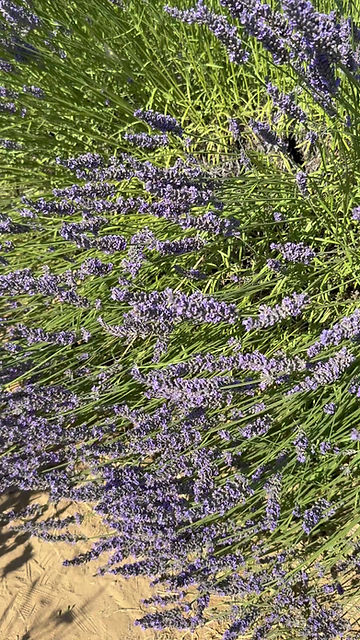
Tournon sur Rhone
and
Tain l'Hermitage

Tucked into a bend in the river, at the foot of grapevine covered slopes, is the town of Tournon. It boasts a lovely 13th century stone church, alluring narrow streets, and the world-famous Valrhona chocolate shop (!). There is a campground by the river and folks play Petanque in the park.


Meanwhile, on the east side of the river, connected by the Pont routier Gustave Toursier, lies hundreds of hectares of grapevines basking in the Midi sun above the town of Tain l'Hermitage. One can catch a rubber tire "little train" to chug up the slopes and through the vineyards (in the 100 degree F heat of the afternoon, this is a welcome amenity) for a magnificent view of the river valley receding in the haze.
Lyon

Cities find their fortune built around a river—a timeless conduit for transportation, commerce, and human connection. Water has always drawn people, serving as both a practical resource and a source of recreation. Lyon, notably, is graced with not one but two rivers: the Rhône and the Saône, which meet within the heart of the city.
With a history spanning over two millennia, Lyon began as the capital of Roman Gaul and later flourished as a vibrant hub of trade during the Renaissance. Today, it is a dynamic metropolis that seamlessly blends the old with the new. Within easy reach of its riverbanks lie several UNESCO World Heritage sites, making Lyon not only a vital economic center but also a tourist magnet for culture and history.

Secret passages known as traboules, enabled people to escape Gestapo raids during WWII

Notre Dame de Fourvier




Parc Tete d'Or
Paris
The City of Lights, wound around the river Seine, has been the longing of romantic hearts throughout the world. "I love Paris every moment," a sentiment expressed even by those who have never been to France, accurately describes the feeling that pulses through one's being strolling along the broad boulevards - all visitors become lovers when imbued with the spirit of Paris.
With vistas that stretch far along the tree-lined avenues and over bridges spanning the Seine, spires and domes spring up above the seven-story rooftops, punctuating an otherwise orderly phalanx of late renaissance facades.
When in Paris, one must do the requisite visits: Musee Louvre, Musee D'Orsay, Eiffel Tower, Arc de Triumph, Tuileries, Notre Dame, etc. but it is also a perfect activity to casually ramble around the narrow cobbled streets of the Marais on a splendid sun-drenched day, discovering unique shops, hidden courtyards, and cool historic architectural details.



le Marais

Musee Louvre


Musee D'Orsay
Featuring Impressionist and Post-impressionist works by many well known artists.
Notre Dame de Paris
Tour Eiffel

Video credit: Cam Erdmann
Food
What can be said about French cuisine that hasn't already been said?

Making Croissants

Making Crepes
Doorways
















Cruisin the Danube
Budapest to Amsterdam
In October we tried out the famous Viking Cruise Line, sailng from Budapest to Amsterdam along the Danube, the Main, and the Rhine rivers, through Hungary, Vienna, Germany, and the Netherlands.




Background
Long ago, when Europe was a collection of waring city-states, even as early as the Roman occupation, the great rivers of the continent flowed unfettered, directed by topography and changing course with the whim of flowing water.
As these waterways provided the most efficient means of getting from one place to another, and Europe’s rivers ran seemingly willy nilly and not as humans might wish for them to oblige our needs, clever people, such as Charlemagne, conceived projects to link them to create a more direct path for commerce and conquest.
After a thousand years of feckless efforts, the Danube/Main/Rhine rivers finally had their moment of entwinement with the construction of the canal that linked them in 1992.
Today, as visitors from around the world come to admire the enduring traces of Europe’s centuries-old craftsmanship and industry, dozens of river tour companies jostle for prime docking spots along the lively cities and picturesque villages that border northern Europe’s major waterways.
River cruise boats can be 400 feet long - not designed to raft the rapids - so all water craft, recreational and commercial alike, must negotiate 68 locks along the journey from Budapest to Amsterdam.
On the Boat
Viking Cruise Lines is practically a household name, certainly everyone who watches PBS is familiar with their promise to "unpack once" and watch the world slip by as we float, like Danube swans, along the lazy rivers of Europe.
Viking is a top of the line company, with Norwegian stylistic touches on board, and attention to the passenger's every need. This cruise line, it must be said, caters to folks who are either mobility challenged or flat out lazy - there are shore excursions available for those who like to walk a little, but lounging on board day after day is allowed and accomodated with the little luxuries expected by the elite who are accustomed to such a lifestyle (and the wannabes who wish to become accustomed). The upper level state rooms have "balconies" to facilitate lounging in private.





Hungary
Budapest
Originally a Celtic and then Roman settlement, because you know how the Romans liked thermal baths, this spot on the Danube became an important urban center of the Hapsburg Austro-Hungarian empire. Buda on the fashionable, hilly west side of the river and Pest on the flat, pedestrian east side joined together in 1873 to become Budapest.


Austria
Vienna
You are probably familiar with Vienna’s illustrious Baroque era, when monumental residences such as Schönbrunn Palace and the Belvedere were constructed, and when the city flourished as a hotbed of music and the arts under the influence of geniuses such as Mozart, Beethoven, and their contemporaries—an age in which social mores were notably permissive. Its strategic position along the Donau (Danube) endowed Vienna with significance first as a Celtic settlement and later as a key Roman outpost, before it evolved into the political and cultural heart of the Austro-Hungarian Empire. Today, visitors and locals continue to revel in its musical heritage, from classical performance traditions to the graceful movements of the waltz, while its architectural splendor remains vibrant and enduring.

The Belvedere

Along the banks of the Danube
Melk Abbey


Passau
The Danube river was the northern frontier of the Roman empire and many cities along its banks were Roman encampments, including Passau - the City of Three Rivers. Shaped like a tongue tasting the sweet waters, Passau sits at the confluence of the Danube (blue because it is the deepest), the Inn (green because of snow-melt), and the Ilz (black because it drains peat swamps).
Peering down from the cliff opposite the town hall sits the imposing Veste Oberhaus, a museum and former fortress of the Bishop, built in 1219. Living in a castle during that time in history was a constant challenge and the daily exigencies of this lifestyle are well documented with artifacts in the elaborate exhibits in the fortress-museum.

Veste Oberhaus

Regensburg
Founded in 1146, Regensburg's medieval town center is so well preserved it has been designated a UNESCO World Heritage Site. Wandering the cobbled streets and ducking into a cafe or sausage haus is a delightful pastime for visitors.
Every German town has it's own special beer, but Regensburg claims to have the oldest brewery in Germany. And don't miss the butter pretzels!


Regensburg once had a thriving Jewish community. These stolpersteine (stumbling stones) commemorate places where people lived before being deported to death camps and murdered by the Nazis.


Bamberg
Even in the pouring rain (a common occurrence in the fall and winter), Bamberg is a quintessential Bavarian gem, with half timbered structures and baroque ornamentation.
The Rathaus (town hall) is built on an island in the river, allegedly due to a turf war with the Bishop in the 1400's. Part of this building is literally hanging off the main structure with only the bridge buttress holding it up.

Nuremberg
Notorious to modern audiences for its role in the postwar Nazi trials, Nuremberg holds a far deeper and more complex legacy as a center of Nazi activity during the Second World War. It served as a major site for party propaganda rallies and ideological displays, and the remnants of its severe, fascist architecture still stand—perhaps as a stark reminder of an era best not forgotten.
Allied bombing near the end of the war destroyed much of the city’s once–charming medieval and Baroque architecture. Yet the great medieval castle—long regarded as one of Europe’s most impenetrable fortresses—survived. Several of the massive stones in its defensive walls still display the original holes used for hoisting them into place with medieval lifting methods, offering a tangible link to the city’s distant past for those who look closely.



Nuremberg is famous for it's seasonal delicacy called Lebkuchen, sometimes compared to gingerbread which is a terrible understatement - this cookie is resplendent with nuts and dried fruits as well as spices. Of course I brought home a stack of them!

The market square hosts a spectacular fountain. It is good luck to turn the golden rings fastened to the surrounding gate.
Nuremberg Fortress

Wurtzberg
Although this town has its share of baroque architecture dripping with ornament, the jewel in the crown is the Residence, a palace built for the Prince-Bishop in 1744 and now a UNESCO World Heritage Site. Lavish is barely an adequate adjective to describe the architecture, furnishings, chandeliers, tapestries, muraled mirrors, ornament, and fixtures. One must see it to believe it.
The "Old Main Bridge," significant to the history of the town, is now a gathering place at happy hour when folks congregate with their wine glasses for golden moments.

Happy Hour at Old Main Bridge


Wurtzberg Residenz
Wertheim
With not much to distinguish it, the town of Wertheim is, nevertheless, a lovely little grouping of typical Bavarian buildings - it even has its own leaning tower.
A short walk up the hill takes the visitor to the castle ruins. I spent forty minutes walking around the ruined structure looking for a way in, only to find out that there is no "in" - it is just a ruin. Climbing up the tower of the old Reach provides an outstanding view of the community and the river valley beyond.

Wertheim Castle Ruins
Koblenz
Koblenz, Latin for confluence (because it was founded by the Romans over 2,000 years ago), is located where the Rhine meets the Moselle, together draining a large part of Europe.
This strategic spot is the docking point for most river boats, and the launching point of the fast and modern cable cars that carry visitors and locals up to the cliff where the Festung Ehrenbreitstein fortress (part of a UNESCO World Heritage Site) houses museums, playing fields, a restaurant, youth hostel, and venues for events. Families were out flying kites when we were there on a Sunday.



Ehrenbreitstein Fortress

Cologne
When visiting Cologne, you might want to see the very tall cathedral and twelve Romanesque churches, remnants of medieval streets and bridges (heavy bombing at the end of the second world war demolished 80% of the thousand year old city center), but the best destination is the Imhoff-Schokoladenmuseum – Chocolate Museum, just about 1/4 mile from the tour boat docks.







Castles on the Rhine
The Upper Middle Rhine Valley, a UNESCO World Heritage Site, is sprinkled with numerous castles and forts. Many are ruins but the romantic movement inspired renovations and restorations of these crumbling stone piles - because who doesn't want to live in a damp, cold stone box?
As long as waterways in Europe have been used for commerce and conquest, castles have functioned along the banks of the Rhine as a means to control trade and defend the areas served by the river traffic.
Your river boat will likely be passing through this area during daylight hours so passengers with their cameras can happily snap away. I certainly did!














Kinderdijk
You may recall the tale of Hans Brinker, the boy who saved his village by plugging a leak in the dike with his finger. The story endures because it speaks to a very real challenge: nearly half of the Netherlands lies below sea level, land painstakingly reclaimed from the North Sea since the 15th century. This reclaimed terrain—known as polders—was made habitable by continuously pumping water from flat, swampy land up and over the protective dikes that hold the sea at bay. And how was this remarkable feat accomplished? With those quintessential Dutch machines, windmills, of course!
Diesel and electric engines, along with Archimedes-screw technology, have largely replaced the traditional windmill, yet many of these historic structures still remain—some even in full working order. The most impressive collection of these romantic icons - built in the 1700's - can be found at Kinderdijk, a UNESCO World Heritage Site. Admission to the park includes a guided tour and the opportunity to step inside a functioning windmill, complete with period furnishings. And, yes, wooden shoes really were a thing - to keep the feet dry in a landscape where water is as omnipresent as air.
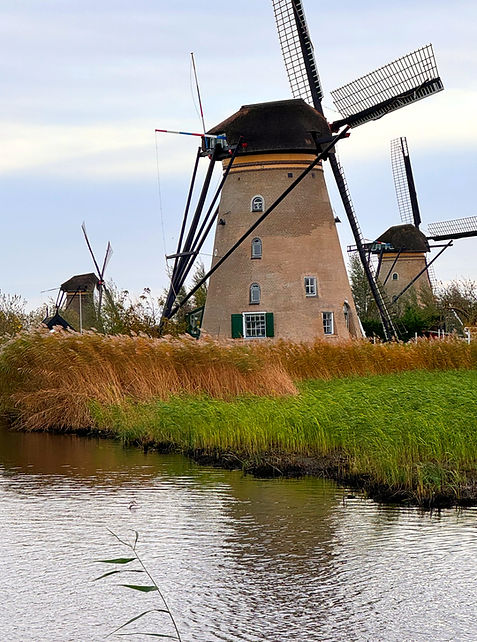





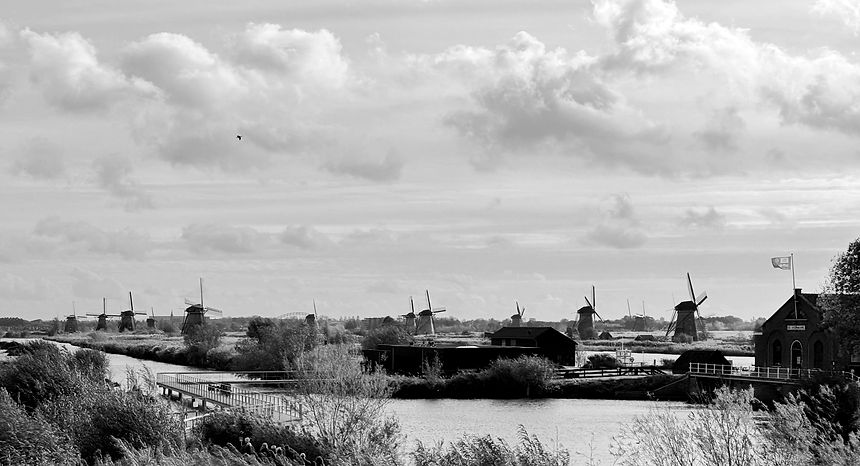
Amsterdam
Amsterdam has something for everyone. The hippest international city in Europe, it has art and architecture, age-old culture, street music, weed freedom, casual sex, tulips and cheese, lots of water ways, people in the crowd speaking dozens of languages, and the bicycles own the streets. There is always something to catch one's attention.
Our boat cruise terminated at the Amsterdam Central Train Station and we lugged our bags three blocks to the Ibis Amsterdam Centre Hotel - great location, good price, friendly staff, and super easy check-in and check-out process.
Everything you want to see is walkable from the train station or just take the Metro. We spent several days wandering around the canals, popping into random shops and museums, and eating whatever food came our way.
I recommend a super breakfast place at the train station called de Volkslust - excellent farm-to-table type food and reasonable prices.

















































